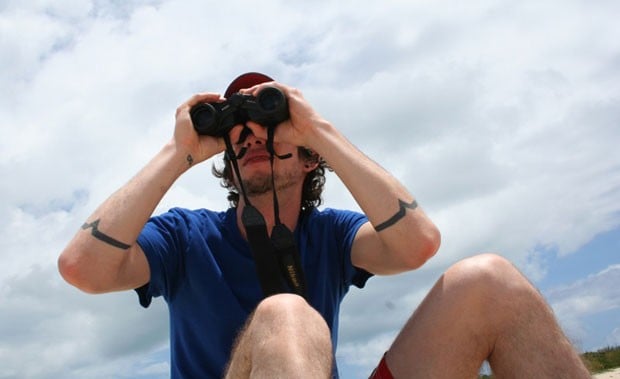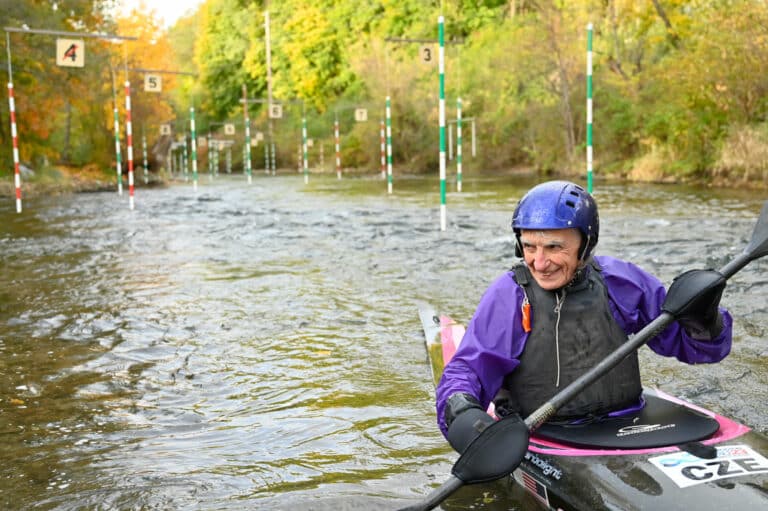Where’s the finish?
When I run and have nothing better to do, I often find myself crunching numbers – miles remaining, miles completed as percentage of anticipated total, average pace over last quintile as expressed in meters/second, etc.
There’s just a certain allure to it – a sort of puzzle-solving pleasure like that derived from crosswords. Take a nice, round 10-mile run. What is not to enjoy about that magical 0.8 mile that separates the one-quarter mark at 2.5 from the one-third point at 3.3, the latter feeling like a much more significant waypoint in a purely qualitative sort of way? And granted, the true one-third point is actually closer to 0.83 mile beyond the quarter, but by the time you work through the math and figure out that the extra 0.03 mile is, like, not quite 50 meters, you’re already closing in on the 3.5-mile mark. And then it might occur to you that there exists a strange conflation between the English and metric systems in distance running, and just for the hell of it, you might decide to work through that same 0.03 calculation in yards, which is a good bit tougher to work out as you’re trotting down the road, while simultaneously devoting certain baseline mental energies toward monitoring and preparedness functions for oncoming cars, dogs, holes, etc. So when you’ve finally worked it out to 0.03 mile = 52.8 yards, you’re really getting close to mile 4, at which point the halfway mark is just around the bend, and then you’re in the home stretch.
Trust me, this is a fantastic way to pass the time while running.
And so, as I trained for my first-ever 50-mile race this fall – Virginia’s famous Mountain Masochist Trail Run – I coped with the attending dread and exhilaration in numbers. E.g.: A five-mile jog is a piece of cake, ergo the MMTR is no more than 10 easy little runs strung together. Child’s play. Or, e.g.: Because my 26-mile tune-up on the Wild Oak Trail in October turned into a death march, the MMTR is going to be doubly, unimaginably painful and hateful.
Because I’m a glass-half-full type, or maybe just a fool, I zeroed in on scenario #1 during the sleepless night before the race in my Lynchburg hotel. Every little thing will be alright, right?
And so here I am, on the Blue Ridge Parkway, surrounded by bobbing headlights in the 6:30 a.m. chill, continually downshifting my pace in the flat and easy early going. Slow, I tell myself. Slower. Long way to go.
5k. Cross the James. First hill. Re-cross the river. Orange glow spreads from the east. Aid station #1. My pace is a bit slow, I think, but I have a history of quick starts and spectacular flameouts. Better safe than sorry. And here begins the first extended climb. I run practically the entire thing, keeping count of the people I pass, my confidence high, my pulse even, all systems go.
This being the Mountain Masochist, though, there soon comes the next long climb, and yet another, and the next and the next. 10 miles, then 15, then 20, and the simple constraints of endurance and ability make themselves apparent. I can no longer run the entire hills. I transition to Plan B: 100 steps running, 50 steps walking, 100 steps running, 50 steps walking, repeat until hill ends. It is 10:15 by my watch and my thinking feels clouded for the first time. Am I almost four hours in, or five? I rehash the “10 easy runs strung together” mantra. I am somewhere well into Easy Run #4, and it is not feeling so easy. Doubt is now cast on the efficacy of my approach.
Heading up Buck Mountain, somewhere past the halfway point, my 100-50 run-walk system goes out the window, replaced by an unstructured and desperate less-running, more-walking technique. And then, few miles later, toiling up (always up, up, up it seems today) to Hog Camp Gap, I adopt my third and final uphill paradigm of the day: walk slowly, while hanging head and cursing.
There is a heinous matter of true race distance that begins to factor in now. The MMTR, they say, with wink and nod, is a 50-mile race. Maybe “a bit long,” the race director might admit. Maybe more like 52. Or 54, even, according to someone’s Garmin last year. The true seriousness of this fuzzy math becomes apparent somewhere around mile 30. Do I have 20 miles left, or do I have 24? For someone who parses numbers down to hundredths of a mile, this is a nasty, nasty little problem to deal with, and its nastiness has a strong positive correlation with fatigue.
Somewhere on Pompey Mountain, c. mile 38, as I’m starting to get truly pissed about the fact that I have 12, or maybe 16, miles left, I realize that something bad is at work in the gastric tract. It occurs to me that I haven’t peed for hours, though I’ve been drinking plenty. I am feeling very, very thirsty, though my stomach feels and sounds extremely full. Worrisome. I glance at my watch. My pace over the last couple miles is unspeakable, off-the-charts slow. Very worrisome. And thus commences a series of throw-in-the-towel calculations: number of miles left divided by number of hours until 6:30 p.m. cutoff equals minimum pace required to finish, calculated for both best- and worst-case scenarios re: variance in distance potentially remaining. Because 4 miles amounts to about an hour at this pitiful point, my margins of error are both enormous and depressing, and I guess this is what I’ll look back on as a low point.
I notice a bunch of runners are passing me. According to my projections, I think I’ll probably stagger in by dusk, but I’m in uncharted waters now. I’ve never run this far before, and I don’t know what will happen. And besides, I’m not sure I really trust my math at this point.
And then, relief, in the form of the therapeutic puke, a messy little episode that raises numerical considerations of its own: the astounding apparent volume of my stomach, the rate of flow at which the torrent of sports beverage-colored liquid speeds down the trail, the number of witnesses (this happened in the immediate vicinity of an aid station) looking on with revulsion and worry, and so forth. I wipe my chin. I feel a lot better, though that’s not saying much, and I head on down the trail. I will later learn that this whole full-belly problem probably had something to do with electrolyte imbalance. Rookie mistake.
I spend some miles beside an incredibly cheerful runner whose encouragement means more to me than he will probably ever realize, and whom I do not have the energy to properly thank. I fall back, and now am beside another friendly stranger. I am unable to compute figures any longer, I am uninterested in computing. I am running on the last wisps of fumes, hobbling along in his wake, unable to pick my feet up above the leaves that carpet the trail, relying on blind luck to avoid roots, rocks and other mishaps.
On and on, and endlessly on. Stomach is still unhappy. Legs and feet in vicious revolt. Volunteers at last aid station crack jokes about piggyback rides that were probably funny but just seem cruel. Mental wherewithal on the verge of abandoning me entirely. Tears seem to be forming in my eyes, and still, curve after curve, more trail ahead.
And then, serendipity, the last corner, the finish comes in view, I hear my wife whooping encouragement, I sense clapping in my vicinity, I think someone official-looking might be shaking my hand, and now I am lying in the sweet green grass, twitching like a fish, confronted with the day’s final set of figures – 9:28:05, 34th place, and, most satisfying, the number of 50(?)-mile finishes now under my belt: 1.








